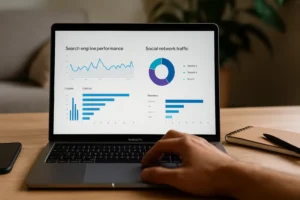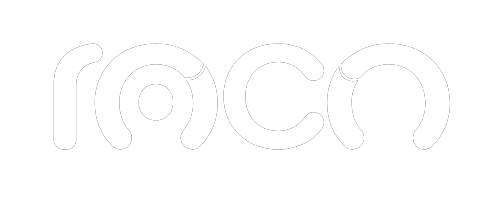In digital marketing, images are much more than decorative elements: they impact site speed, user experience, conversions, and SEO ranking. But for them to truly add value, it's essential to define the appropriate image format for each case. From optimized files to visual strategies for campaigns, understanding the different formats can make the difference between a slow site and an effective one.
In this article, we explain why defining image formats isn't just a technical task, but a strategic decision that influences your brand's entire digital performance.
What does “Define Image Format” mean and why is it so important?
When faced with the task of uploading an image to your website, online store, or ad campaign, one of the first steps is clear: define the image format. That is, consciously choose the file type you'll use based on its purpose and characteristics.
An image format is the way visual information is digitally encoded. The choice affects quality, file size, transparency, browser compatibility, and, of course, SEO.
For example:
- Want to display a vibrant, high-resolution photograph? You'll probably use JPEG.
- Need an icon with a transparent background? Then the PNG format would be more convenient.
- Are you designing a scalable logo that needs to look good at any size? Your best option is SVG.
Understanding what an image format is and when to use each one will allow you to make smarter decisions and optimize your digital presence from the ground up.
Types of Image Formats, Which One to Choose?
Below, we explain the most common formats and their applications in web design, branding, and marketing:
1. JPEG (.jpg, .jpeg)
- Use: Photographs and visual banners.
- Advantages: High compression with good visual quality.
- Disadvantages: Lossy compression, does not support transparency.
2. PNG (.png)
- Use: Graphics with transparencies, icons and screenshots.
- Advantages: High quality, supports transparency.
- Disadvantages: Larger files.
3. GIF (.gif)
- Use: Simple animations, graphics with few colors.
- Advantages: Supports movement.
- Disadvantages: Limited color palette (256 colors).
4. SVG (.svg)
- Use: Logos, vector graphics, adaptive icons.
- Advantages: It scales without losing quality, ideal for responsive design.
- Disadvantages: Not suitable for photography.
Knowing how to define image formats based on the graphic and functional purpose of your content is an essential step toward digital efficiency.
Image Optimization, Key to SEO and Website Speed
A poorly optimized image may seem insignificant, but it can slow down your website, affect the user experience, and cause you to lose rankings in search engines. Therefore, before uploading any file, define the image format and implement an appropriate optimization strategy.
Compression: Lossy or Lossless?
- Lossy compression: Significantly reduces image size by removing non-essential data (e.g., JPEG). Ideal for photos where extreme sharpness isn't required.
- Lossless compression: Preserves original quality, useful for graphics and images where detail is key (such as PNG or SVG).
Recommended tools to optimize images
- TinyPNG: Reduces weight without affecting visual quality (ideal for JPEG and PNG).
- ImageOptim: Excellent for Mac users looking to automate optimization.
- Kraken.io: It offers flexible compression modes (lossy/lossless) and plugins for WordPress.
An effective strategy starts from the moment you define the image format and prepare it for an agile and efficient web environment.
Responsive and Accessible Images, User-Centered Design
In the mobile-first era, it's essential that your images adapt to different devices. Therefore, when preparing your files, you should not only define the image format, but also its visual behavior.
Responsive images
Make sure to use attributes like srcset and sizes in HTML to load different versions of an image depending on the screen size. This not only improves the user experience but also optimizes mobile performance.
Alternative text (Alt-Text)
Each image must have descriptive alt text. This:
- Improves accessibility (users with screen readers).
- Strengthen SEO by including relevant keywords.
Example of optimized alt-text:<img src="grafico.svg" alt="defines image format in optimized vector graphics">
Images in Google Ads, Visual Impact that Converts
Selecting and optimizing image formats is also key in advertising campaigns. Whether in display ads or Shopping ads, Google has clear rules that you must follow.
Display Images
- Recommended format: JPEG or PNG.
- Clean background, focus on the main product or message.
- Optimization for weight and resolution.
Images for Shopping
- Minimum resolution: 800×800 px.
- Recommendation: Use high-quality JPEG, but with compression to improve loading and visibility.
An effective campaign starts with the most basic details: define the image format before uploading your visual assets to Google Ads. Want to understand how Google Ads can boost your digital strategy? Discover all its benefits and uses in our article: “What is Google Ads for? Benefits and Strategies”
Professional Web Design: When Formatting Matters
At Agencia Roco, we understand that every image must be functional, aesthetic, and strategic. A good design not only looks good, it also loads quickly, adapts, and improves conversions. Therefore, one of our pillars is always to start with a solid foundation: defining the appropriate image format for each case.
Our visual philosophy
- Each image has a purpose within the architecture of the site.
- We focus on the user experience from a visual perspective.
- We use analytics tools like Google PageSpeed to keep performance at a high level.
The Future of Image Formats: WebP and Beyond
Standards evolve, and with them, formats. Today, WebP is gaining ground as an optimized alternative to JPEG and PNG.
Benefits of WebP
- More efficient compression without loss of visual quality.
- Lighter files, ideal for web speed.
- Growing support in modern browsers.
If you're wondering if it's time to upgrade, remember: first define your image format, then evaluate compatibility, quality, and goals.
Define Image Format, Improve Your Digital Strategy
Defining an image format is no small task; it's a strategic action with a direct impact on SEO, user experience, advertising campaigns, and brand perception. From JPEG to WebP, SVG to PNG, choosing the right format means a faster, more professional, and optimized website.
At Agencia RocoWe help you create and maintain high-performance visual experiences. Ready to improve your digital presence from the ground up?





